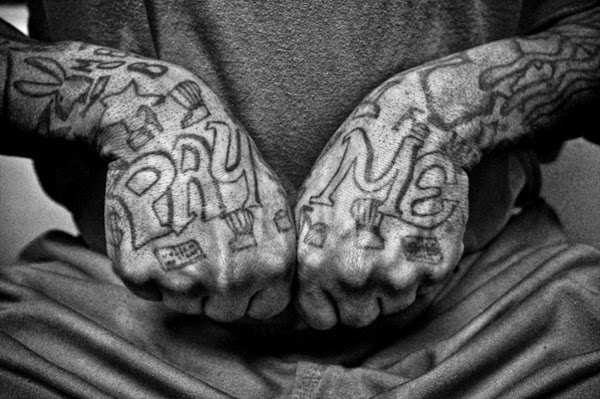The first is usually dirt. The drains usually occupy a low spot, if they were installed properly, and if the area around the drain is not protected or stabilized somehow by regulating the size of the material around the drain, you always end up with that material going into the drain, multiply that by10 - 15 years or more and you get a serious accumulation.
The second item is usually roots. Area or landscape drains are notorious for being installed at a lower quality standard. The majority of pipe joints we encounter with regard to landscape drains are not glued. The fact that they are simply press fitted together allows the joints to leak as they carry water to the outflow. That leak over time brings roots into the line through the joint, they grow and expand and many times the roots will deform the pipe. If the pipe has substantial dirt in it as well, now you have a mass of dirt with roots combined. This combination over years and years of accumulation, makes it pretty close to impossible to remove with a typical plumbers cable machine. The machine typically buries the cable into the dirt and many times it becomes stuck requiring a dig to get the cable out. If that happens to be under concrete, it's going to be expensive.
"You can not cable dirt." It just doesn't work.
Imagine using an electric drill, put any bit on it that you please, and start drilling into a 5 gallon bucket full of dirt. What do you think is going to happen? Nothing. Your going to move a little bit of dirt around but your certainly not going to remove the problem dirt.
Now, hit that same bucket of dirt with a firehose and what do you think is going to happen. Yes your right, no more dirt. The volume and pressure of the water will put the dirt into suspension in the water and flow it out of the bucket. Combine that with a rotating nozzle to cut roots and you begin to see the advantage hydro jetting has over running a cable.
The last item I would call "debris" and it usually ends up being chunks of something. I attached a couple of photographs to give you a "for instance."
The first is a very large amount of medium pebble rock that went into a customers landscape drains from around a koi pond. Some of it is visible here but we probably pulled out 15 to 20 lbs of pebble rock that had mixed in with dirt in a low spot in the line run. That could never have been removed with a cable machine.
Pebble rock removed from Landscape Drain with Hydro Jetting.
Grout material left in line by tile contractor after installing new backyard hardscape.
Note the large and small chunks of rocklike material removed with Hydro Jetting.
Close up of the hardened grout, note the half pipe shape clearly visible in the left rear piece.
With this type of material, the hydro jetting with high pressure water actually gets between the pipe wall and the grout and breaks it free to move. The water flows it out of the pipe. You could never remove this material with a cable machine.
Now let's be honest, there is no magic cure. Landscape drains are a very difficult type of problem because there are so many variables and landscape lines are generally not installed to code. For that same exact reason, many vendors will not service area drains.
Regardless of how effective our hydro jetting machine is, we have seen lines that could not be cleared for a number of reasons. Sometimes the pipes are no longer round from being crushed by a careless installer or deformed by root intrusion, or the layout and the use of T fittings instead of a swept turn will prevent you from getting through. Sometimes the roots are so heavy from so many years of neglect that it just isn't feasible to hydro jet and your better off replacing the line if the above ground hardscape allows it.
With all things being equal, Hydro jetting is by far a much more effective process at removing a variety of different types of debris.
Large root mass quickly chewed up by the warthog nozzle. Note the size of the roots as compared to the 1/2 inch I/D of the green hose.
Superjet Sewer and Drain Cleaning.
Superjet Sewer and Drain Cleaning.
Superjet Hydro jetting demonstration video






